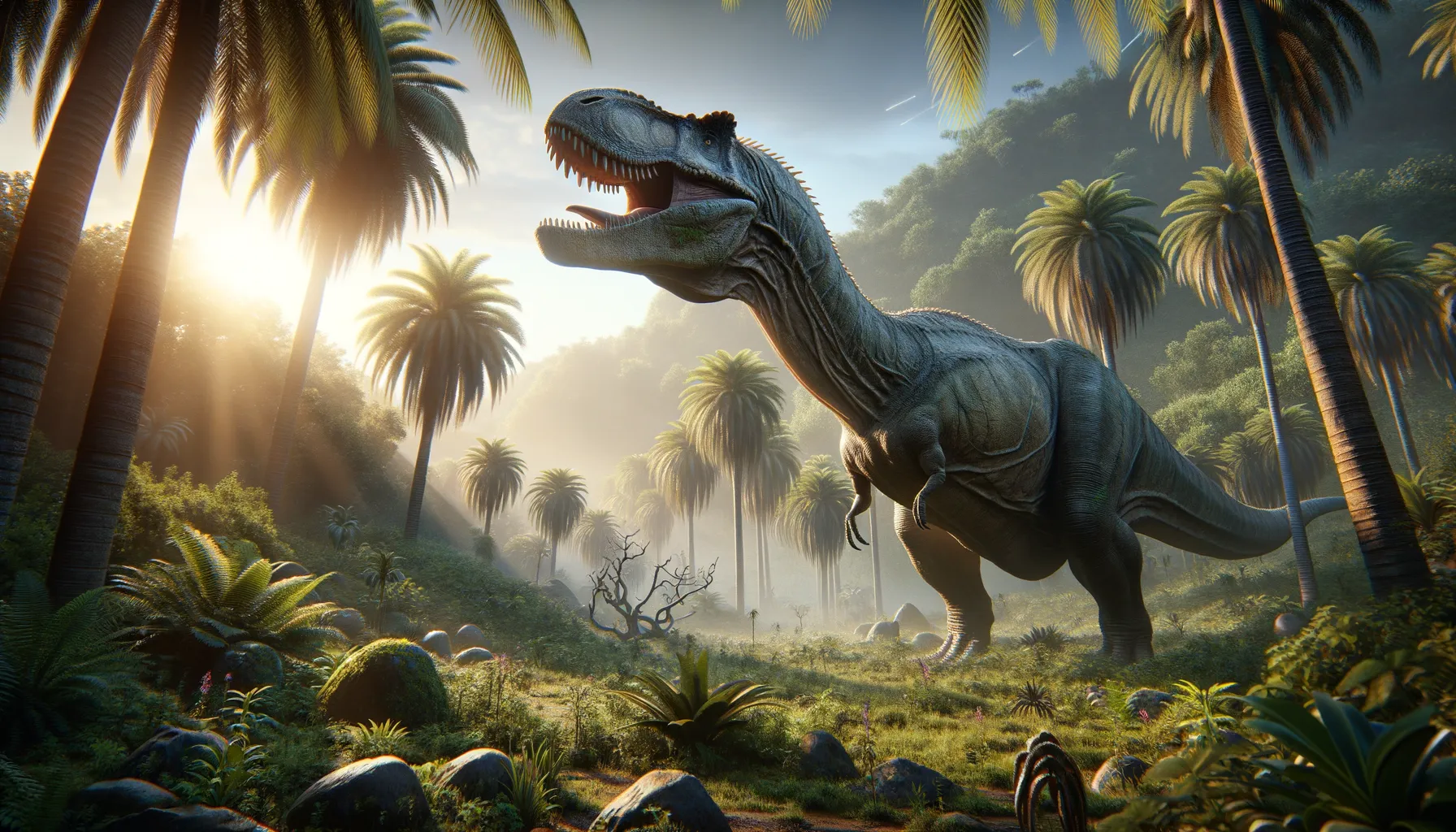
Alamosaurus
The giant of the Late Cretaceous!
Period
Cretaceous
Length
Around 69 feet long from head to tail.
Height
Approximately 20 feet tall at the shoulder.
Weight
Up to 70 tons, among the heaviest dinosaurs.
Alamosaurus was a colossal herbivorous dinosaur belonging to the sauropod family. It roamed the earth during the Late Cretaceous period and was among the last of its kind before the mass extinction event. Its sheer size made it a formidable presence in its habitat, and it played a crucial role in its ecosystem as both a consumer of vast amounts of vegetation and a prey for large predators.
Diet
Alamosaurus was strictly herbivorous, feeding on a variety of plant material. It likely consumed large quantities of ferns, conifers, and flowering plants, using its long neck to reach high vegetation. Its diet would have required it to constantly graze to sustain its massive size.
Hunting
As a herbivore, Alamosaurus did not hunt other creatures for food. It likely roamed in groups, protecting each other from predators while searching for the best feeding grounds. Its size offered natural protection against many predators.
Environmental challenges
During its time, Alamosaurus faced environmental challenges such as fluctuating climates and competing herbivores for food resources. Droughts or shifts in vegetation patterns could have dramatically affected its habitat and food supply. Over time, predation pressures from large theropods might also have influenced its survival strategies.
Speed
Relatively slow due to its massive size.
Lifespan
Could have lived several decades in the right conditions.
First discovery
Discovered in 1921 in the San Juan Basin, New Mexico.
Fun Facts
- Alamosaurus was one of the last surviving dinosaur species before the mass extinction event that wiped out the dinosaurs.
- This massive dinosaur lived during the Late Cretaceous period, around 70 to 66 million years ago.
- Alamosaurus was a type of titanosaur, which is a group of long-necked, plant-eating dinosaurs.
- Fossils of Alamosaurus have been found in the southwestern United States, including Texas, New Mexico, and Utah.
- Despite its name, Alamosaurus is not named after the Alamo in Texas; the name actually comes from the Ojo Alamo Formation in New Mexico.
- Alamosaurus is thought to have been one of the largest dinosaurs in North America, potentially reaching lengths of up to 100 feet!
- Scientists believe Alamosaurus traveled in herds, which might have helped protect them from predators.
Growth and Development
Alamosaurus grew rapidly in its early years to outpace predators. This rapid growth would have required intense feeding periods and substantial nutrient intake. As it matured, its growth rate would slow, allowing it to maintain its massive size throughout its adulthood. Fossil evidence suggests varying growth rates depending on environmental conditions.
Habitat
Alamosaurus inhabited lush floodplains and semi-arid environments with abundant vegetation. These areas provided ample food sources and necessary water for hydration. The terrain was likely diverse, ranging from open plains to forested regions, supporting a wide variety of concurrent ecosystems.
Interaction with other species
Alamosaurus lived alongside other dinosaurs, including herbivores and carnivores, creating a dynamic ecosystem. It may have formed herds, offering defense against predators like Tyrannosaurus rex. Its size enabled it to dominate food resources in its environment, occasionally competing with smaller herbivores.
Natural lifespan
Alamosaurus could have lived approximately 70 to 80 years.
Reproduction
Alamosaurus laid eggs, like all sauropods, likely in communal nesting grounds for increased survival chances. These nests were probably in carefully selected, predator-safe areas. The eggs were cared for in such a way to provide adequate warmth and protection until hatching.
Social behaviour
Alamosaurus may have exhibited herd behavior, moving and feeding in groups. This social structure provided safety in numbers from predators. Communication would have been vital, possibly involving low-frequency sounds or physical cues to keep the herd organized and alert.
Fossil locations
Fossils of Alamosaurus have been primarily found in the southwestern United States, particularly New Mexico, Texas, and Utah. The San Juan Basin was a significant discovery site, revealing important geological and climatic information. These discoveries have provided valuable insights into its distribution and ecological role in Late Cretaceous North America.
